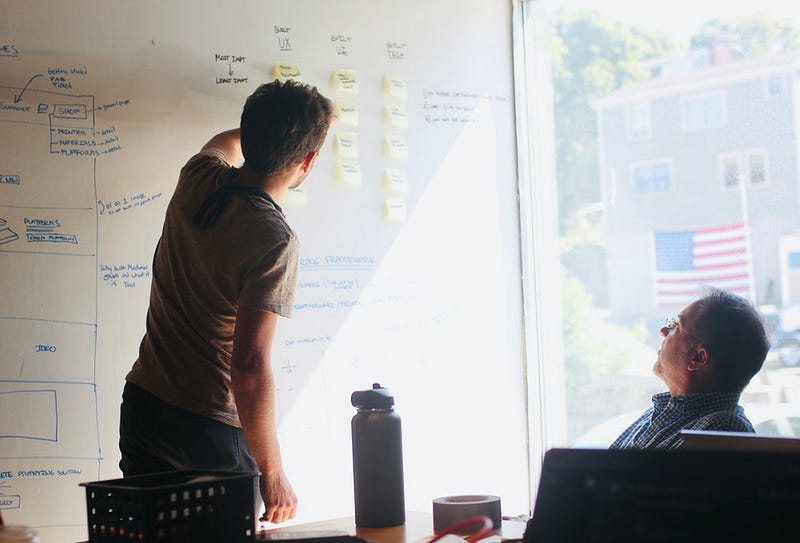Embracing Change: The Role of Programming Languages in Success
Written on
Chapter 1: The Importance of Programming Languages
Your choice of programming language is less critical than your commitment to improving and your ability to transfer knowledge. Throughout my career, I have encountered a strict focus on specific languages and technologies from recruiters and hiring managers. Recently, I was invited to share my insights in an interview (you can find it here), but I feel compelled to delve deeper into this subject.

Credit: AltumCode Unsplash
Section 1.1: Perspectives from Startups
Picture yourself as a tech startup founder with an innovative product idea. The logical next step is to bring your vision to life, considering various technical aspects and preparing an initial proof of concept for your application. If you have prior programming experience, the language used for your first MVP will likely be one that your team is comfortable with. Whether this choice is well-reasoned or simply a matter of convenience will become clear over time.
Subsection 1.1.1: The Established Business Landscape
In established companies, the programming language often becomes a non-negotiable element, with teams firmly believing it’s the sole path forward. This becomes ingrained across the organization, and everyone on the development team understands the product's direction. However, this rigid mindset, typically accompanied by an "if it works, don’t change it" attitude, can hinder progress. Companies that embrace new technologies while maintaining cost efficiency often attract talent through their open-source contributions and participation in conferences.
Section 1.2: Language Limitations
Both scenarios, while seemingly effective for business operations, can create significant barriers to future growth. Sticking to a single programming language, often chosen during the early stages, can lead to technical debt and stifle the fresh perspectives that businesses need to innovate. Languages and technologies evolve rapidly, and I’ve been in the IT field long enough to remember when virtualization and cloud computing were just emerging concepts.
The first video, "YOUR FIRST PROGRAMMING LANGUAGE DOES NOT MATTER (that much)", discusses the broader implications of choosing a programming language and emphasizes that the approach to learning and adapting is far more crucial than the specific language used.
Chapter 2: Tools Over Preferences
When developing a startup idea or managing a complex codebase, it’s never too late to reassess and consider rewriting from scratch. My experience at Hailo, the ‘black cab company’, taught me that any business can and should take a step back and reevaluate when facing technological limitations.
The second video, "Does it matter what programming language you use?", explores the significance of flexibility in language choice and the overall impact on project success.
Picking the right tools for the job may seem straightforward, but we often rely on familiar solutions without exploring alternatives. For instance, when I had limited time to repaint my home, I opted for electric paint sprayers and heaters, which allowed me to complete the task efficiently. This experience taught me that the tools we are comfortable with aren’t always the most effective for achieving our goals.

Credit: Kevin Ku Unsplash
Section 2.1: Team Development and Adaptation
Transitioning from PHP and Java to Golang at Hailo was challenging. It required retraining the entire team and giving everyone the opportunity to experiment with the new language. Despite the difficulties, regular brainstorming sessions fostered a collaborative spirit that led to the creation of an outstanding product. My time at Hailo instilled in me a passion for Golang and an appreciation for discovering new technologies rather than stagnating.
Section 2.2: Timing for Change
Not all businesses can afford a complete technological overhaul, especially when it may lead to a pause in new feature development. This is a regular exercise in my own projects, where I consistently evaluate and optimize my code and infrastructure.
To assess whether you are ready for a significant change, consider this guideline: If your team is primarily focused on resolving urgent issues, prioritize putting out those fires before attempting to rebuild. If adding a new feature is taking longer than expected or requires substantial changes, it's time to take action.

Credit: Katie Rodriguez Unsplash
Ending Thoughts
In conclusion, as a developer, it’s essential to broaden your horizons by experimenting with different programming languages and approaches to problem-solving. This not only prevents you from becoming obsolete in a fast-evolving tech landscape but also enriches your understanding of various technologies.
For founders and executives contemplating growth and competition, embracing change can yield significant benefits. Just look at the bold moves made by companies like Twitter and Facebook to adapt and thrive in a rapidly changing environment.
